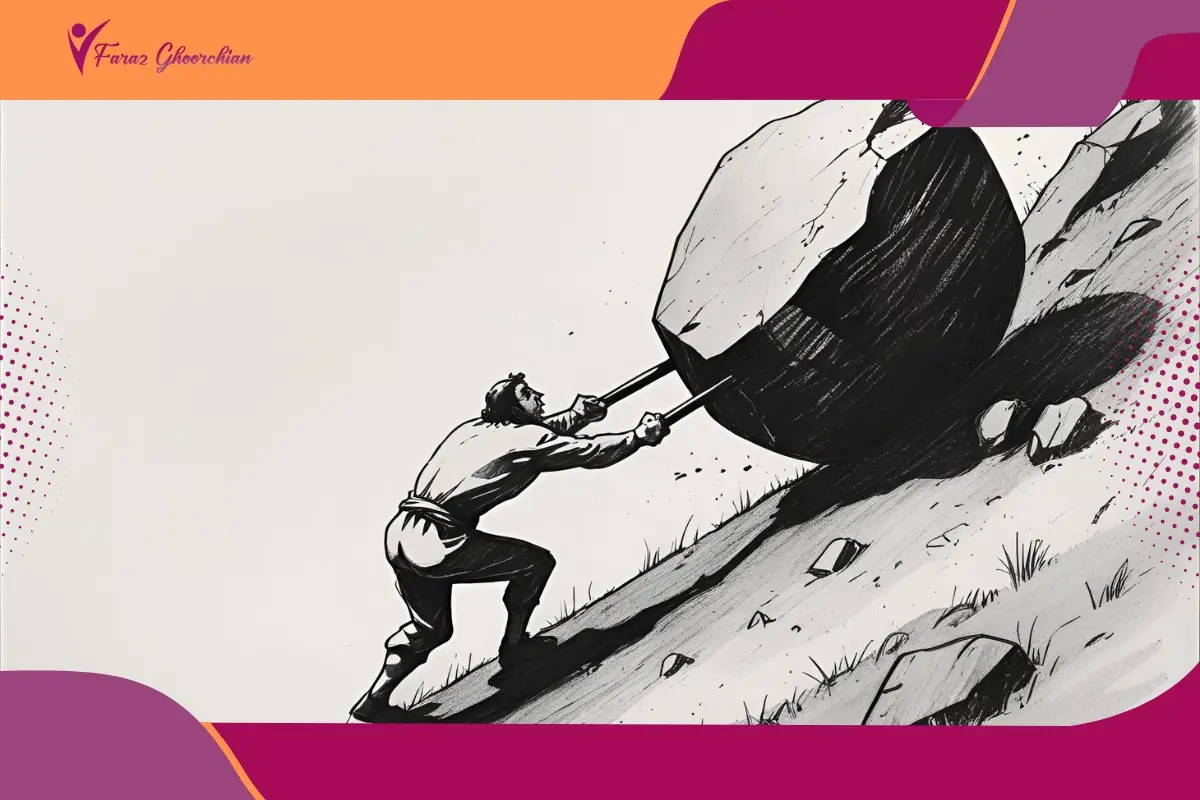Discover the key burnout symptoms and coping tips. Learn strategies for burnout recovery, workplace balance, and mental health support.
- 1. Introduction
- 2. What is Burnout? Definition and Core Meaning
- 3. Burnout Signs and Symptoms
- 4. Burnout in the Workplace
- 5. Mental Health Impact: Burnout vs Depression
- 6. Coping Strategies: How to Cope with Burnout
- 7. Burnout Recovery Tips: Regaining Energy
- 8. Work-Life Balance and Preventing Burnout
- 9. Self-Care and Long-Term Burnout Treatment
- 10. Conclusion: A Path to Balance and Recovery
Introduction
For many people, the signs of exhaustion creep in quietly, showing up as sleepless nights, a short temper, or constant fatigue that no weekend rest can fix. These are often the first burnout symptoms that signal the mind and body are under too much strain. At its core, what is burnout? It is more than being tired. The burnout definition describes a state where stress and pressure pile up until motivation, focus, and even joy in daily life begin to fade. Unlike ordinary stress, it does not go away with a quick break. Learning to notice the early symptoms of burnout and exploring practical coping tips can help protect mental health, restore balance, and guide anyone toward long-term burnout recovery.
What is Burnout? Definition and Core Meaning
If someone asked you what is burnout, you might think of being tired after work, but that doesn’t quite explain it. The burnout definition usually describes a state of exhaustion caused by ongoing stress, yet it feels different when you actually go through it. It can look like dragging yourself out of bed with no energy, staring at a task for half an hour without starting, or feeling detached from things that once mattered.
The tricky part is that the symptoms of burnout sometimes resemble depression. In the comparison of burnout vs depression, the difference is often about cause. Burnout tends to come from the outside, such as too many responsibilities or too much pressure, while depression often lingers even when nothing specific is happening. Physical signs also appear with burnout, like tension headaches, irregular sleep, or that heavy fatigue that does not fade with rest.
So, the core meaning of burnout is not just stress or tiredness. It is a warning sign that the body and mind need recovery, and ignoring it usually makes things harder later.
Burnout Signs and Symptoms
For many people, the early burnout signs and symptoms don’t feel dramatic. They creep in slowly. What starts as ordinary stress turns into something heavier, and no amount of rest seems to fix it. If you’ve ever asked yourself what are the symptoms of burnout, think of both the body and the mind sending out warnings.
Physical signs might show up as:
- Waking up tired, no matter how early you went to bed
- Headaches, stiff shoulders, or that constant back ache that never really leaves
- Lying awake at night, replaying unfinished tasks or tomorrow’s deadlines
- Eating habits shifting, sometimes skipping meals, other times snacking just to cope
Emotional and behavioral changes often include:
- Snapping at people over small things you would normally ignore
- Finding it almost impossible to focus on one simple task
- Feeling distant, like you are going through the motions instead of really being present
- Losing interest in hobbies or friends because everything feels like extra effort
The symptoms of burnout may look different for everyone. In some cases, they present uniquely, such as the subtle signs of burnout in women, which are often overlooked. At times they can even be mistaken for other mental health conditions such as Paranoid Personality Disorder. Noticing them early gives space to make changes before the stress takes a firmer hold.
Burnout in the Workplace
For many people, work is where burnout shows up first. It might start quietly, maybe with late nights finishing reports or answering messages long after hours. Over time, the weight grows heavier. Burnout in the workplace does not just lower productivity; it eats away at confidence and can make an ordinary day feel impossible to get through.
Some of the things that fuel this problem are easy to recognize:
- Deadlines that pile up faster than they can be met
- Having no real control over how the job gets done
- Effort that goes unnoticed, no matter how much is given
- Friction with colleagues that never seems to ease
- Work creeping into personal time, like checking emails in bed
These patterns add up to more than stress. They create the kind of stress and burnout that harms both health and motivation. Paying attention to these triggers and working toward preventing burnout at work through clearer expectations, honest communication, and healthier boundaries is what makes long-term balance possible.
Mental Health Impact: Burnout vs Depression
For many people, the line between burnout vs depression feels blurry. Both can bring exhaustion, irritability, and a loss of interest in things that once mattered. The difference often lies in the trigger. Burnout usually grows from outside pressures, like constant deadlines, long shifts, or family demands. Once the stress is lifted, the symptoms of burnout often begin to fade. Depression, on the other hand, tends to color every part of life, even when there is no obvious stressor.
Think of it this way: a person with burnout might feel better after a real break, while someone with depression may still feel low even on vacation. In mental health, definitions matter. People often ask what does schizophrenia mean to better understand its impact, and the same kind of clarity is needed here. Ignoring mental health and burnout connections can eventually feed into depression, but acting early with rest, boundaries, and simple burnout recovery tips helps prevent that spiral. Knowing the difference also makes it easier to choose the right kind of support and treatment.
Coping Strategies: How to Cope with Burnout
Dealing with burnout symptoms can feel overwhelming, but the good news is that small, consistent steps make a difference. People often ask what are the coping strategies for burnout, and while there is no single answer, certain habits can ease pressure and support recovery.
Some strategies that many find useful include:
- Taking short pauses during the day, like stepping outside for air or stretching instead of pushing through exhaustion
- Learning to set limits, for example closing the laptop at a fixed time even when messages are left unanswered
- Focusing on rest, not just sleep, but also moments of real downtime that let the mind reset
- Adding movement in simple ways, whether it’s walking the dog, biking to work, or choosing stairs instead of elevators, all of which help with burnout self-care
- Journaling in the evening or practicing quiet breathing when thoughts feel too crowded
- Talking with friends, family, or a professional, because sometimes just voicing stress makes it lighter
These are not quick fixes. But taken together, they show a practical path for anyone learning how to overcome burnout and begin rebuilding balance.
Burnout Recovery Tips: Regaining Energy
Finding energy again after burnout can feel slow. Some days it looks like progress, and other days it feels like nothing has changed at all. That is normal. People often search for burnout recovery tips, but in practice how to recover from burnout is usually a collection of small shifts rather than one big fix.
A few things that can help along the way:
- Sleep, real sleep. Not falling asleep with the TV on, not dozing between emails, but actually giving the body full nights of rest.
- Cutting work into small wins. Sometimes finishing one email or one part of a project is enough for the day.
- Doing something that sparks even a little joy, like cooking dinner, playing a song you love, or watering plants. Learning small ways of How to be happy when depressed often follows the same idea, building joy from simple, consistent actions.
- Writing things down when the brain feels crowded. A notebook, even a messy one, can make stress less heavy.
- Talking with someone trusted. Recovery feels lighter when shared.
- Paying attention to subtle changes. Maybe you wake up less tired, maybe you laugh more easily. These are often signs you are recovering from burnout without even realizing it.
Step by step, these practices make chronic burnout recovery possible, turning exhaustion into balance again.
Work-Life Balance and Preventing Burnout
A steady work-life balance makes a big difference in keeping burnout away. When work starts following a person home every night, or creeping into weekends, it becomes hard to recharge. Over time that constant pressure turns into stress and burnout.
Finding balance usually begins with small choices. Closing the laptop at a certain hour, ignoring late notifications, or keeping one day free for family and rest all matter. In practice it can feel difficult, but these habits slowly protect energy. Using good decision-making skills also helps, since choosing what deserves attention now and what can wait stops the calendar from overflowing.
People who actively plan time for hobbies, exercise, or just quiet moments often find they return to work more focused. Even short pauses during the day, like stepping outside for air, make a difference. Building these habits is also part of coping with work-related stress, since it prevents pressure from piling up unchecked. Ultimately, understanding the close link between work-life balance and burnout shows why protecting personal time is essential for long-term health. Creating space like this is what truly supports preventing burnout at work and allows both career and personal life to feel sustainable.
Self-Care and Long-Term Burnout Treatment
Recovery from burnout does not happen in a week. It is slow and often uneven, and that is why building daily self-care into life matters so much. When people think about burnout treatment, they sometimes expect a single solution, but in practice it is a mix of small habits and the right kind of support.
It often starts with the basics: sleep that actually restores, meals that fuel instead of drain, and movement that keeps the body from tightening under stress. Adding to that, many find relief in journaling late at night, taking mindful walks, or simply pausing with a cup of tea to reset. Strengthening problem-solving skills can also help, because challenges feel lighter when there is a plan to handle them.
Some people need more structured help, whether it is therapy, coaching, or medical care. Over time, the combination of healthy routines and guidance creates resilience. That resilience is what keeps burnout self-care effective in the long run, making recovery more than just temporary relief.
Conclusion: A Path to Balance and Recovery
Dealing with burnout symptoms is draining, and it often takes a while before people realize it is more than just stress. Recovery usually begins quietly. Going to bed earlier, taking a walk at lunch, or finally saying no to extra work are small things, yet they become the base of real burnout self-care.
For some, professional support is needed. A therapist or structured burnout treatment can help when fatigue feels too heavy to manage alone. Progress is not dramatic at first. It may be clearer focus, better sleep, or enjoying a simple routine again. These are the early signs you are recovering from burnout.
Over time, using steady burnout recovery tips builds resilience. Life feels balanced again, with energy not only for work but for living fully.















